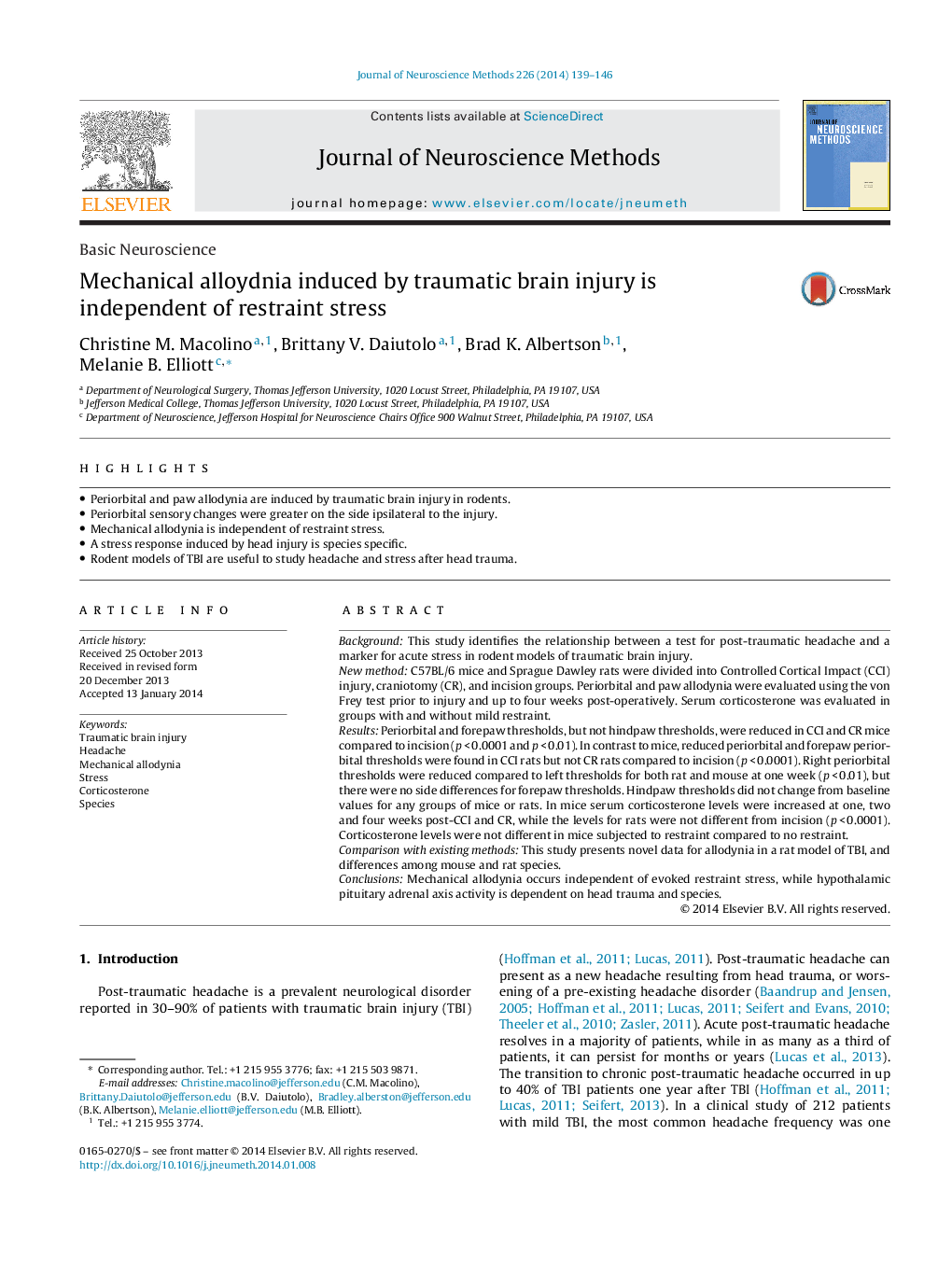| کد مقاله | کد نشریه | سال انتشار | مقاله انگلیسی | نسخه تمام متن |
|---|---|---|---|---|
| 6268870 | 1614643 | 2014 | 8 صفحه PDF | دانلود رایگان |
- Periorbital and paw allodynia are induced by traumatic brain injury in rodents.
- Periorbital sensory changes were greater on the side ipsilateral to the injury.
- Mechanical allodynia is independent of restraint stress.
- A stress response induced by head injury is species specific.
- Rodent models of TBI are useful to study headache and stress after head trauma.
BackgroundThis study identifies the relationship between a test for post-traumatic headache and a marker for acute stress in rodent models of traumatic brain injury.New methodC57BL/6 mice and Sprague Dawley rats were divided into Controlled Cortical Impact (CCI) injury, craniotomy (CR), and incision groups. Periorbital and paw allodynia were evaluated using the von Frey test prior to injury and up to four weeks post-operatively. Serum corticosterone was evaluated in groups with and without mild restraint.ResultsPeriorbital and forepaw thresholds, but not hindpaw thresholds, were reduced in CCI and CR mice compared to incision (p < 0.0001 and p < 0.01). In contrast to mice, reduced periorbital and forepaw periorbital thresholds were found in CCI rats but not CR rats compared to incision (p < 0.0001). Right periorbital thresholds were reduced compared to left thresholds for both rat and mouse at one week (p < 0.01), but there were no side differences for forepaw thresholds. Hindpaw thresholds did not change from baseline values for any groups of mice or rats. In mice serum corticosterone levels were increased at one, two and four weeks post-CCI and CR, while the levels for rats were not different from incision (p < 0.0001). Corticosterone levels were not different in mice subjected to restraint compared to no restraint.Comparison with existing methodsThis study presents novel data for allodynia in a rat model of TBI, and differences among mouse and rat species.ConclusionsMechanical allodynia occurs independent of evoked restraint stress, while hypothalamic pituitary adrenal axis activity is dependent on head trauma and species.
Journal: Journal of Neuroscience Methods - Volume 226, 15 April 2014, Pages 139-146
